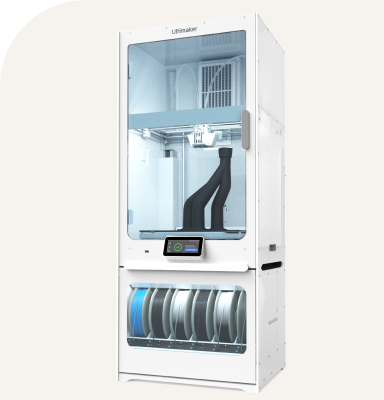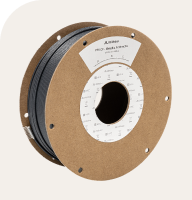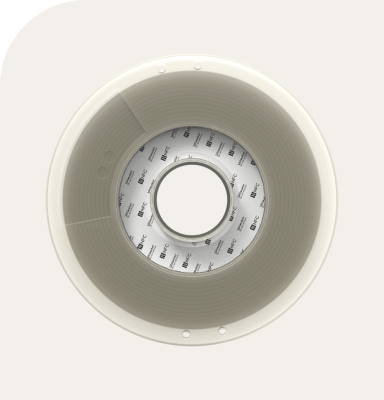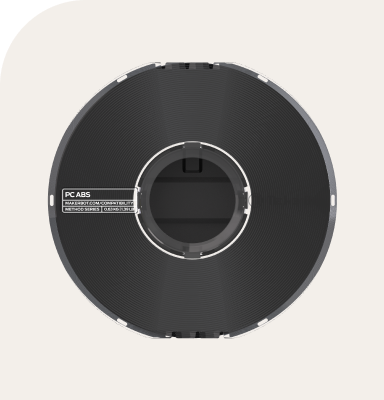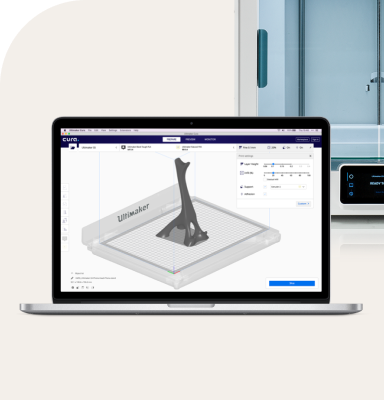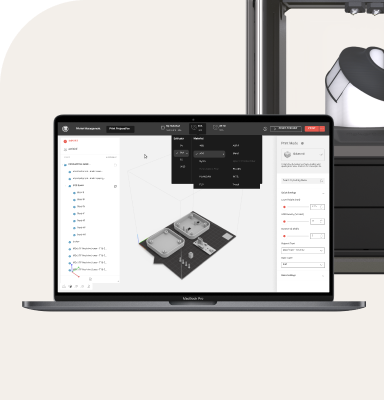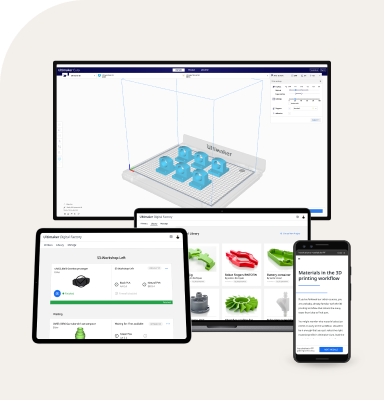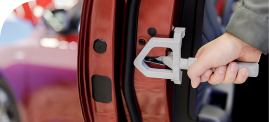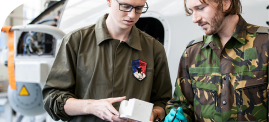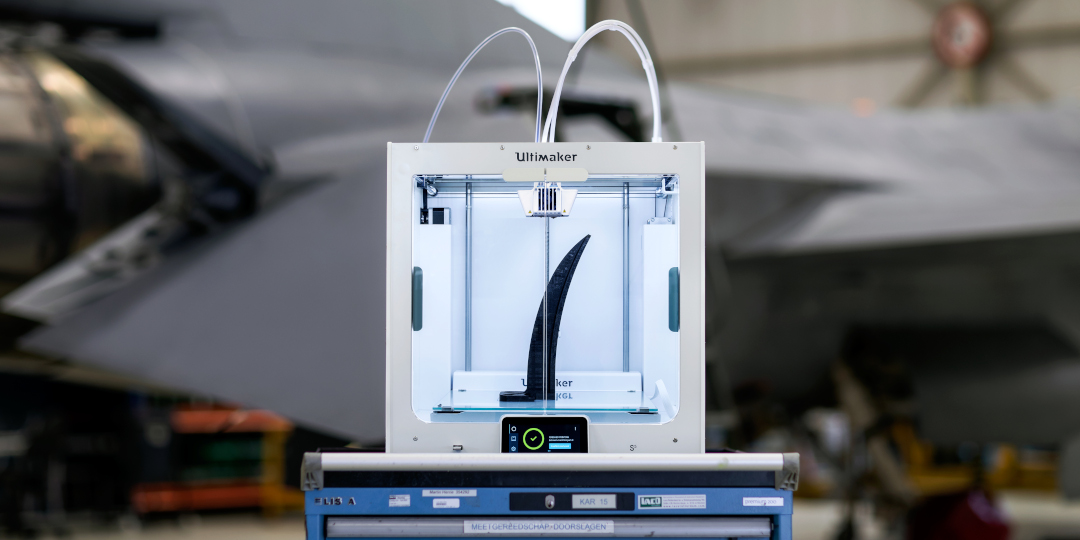The military base in Woensdrecht is the primary maintenance location of the Royal Netherlands Air Force. Staff perform regular maintenance and repairs on aircraft such as Chinooks, Apaches, NH90s, F16s, and many more. The base is also the home of the Koninklijke Militaire School Luchtmacht (KMSL), which is the Royal Netherlands Air Force’s academy.

Royal Netherlands Air Force: Speeding up maintenance with 3D printed tools
The Royal Netherlands Air Force is the Netherlands' guardian of the skies. Their fleet contains a wide range of helicopters, fighter jets, and large cargo planes. These aircraft have many unique, custom-made parts which are difficult to work on with off-the-shelf tools. That’s why the Royal Netherlands Air Force started printing custom-made tools with Ultimaker 3D printers.
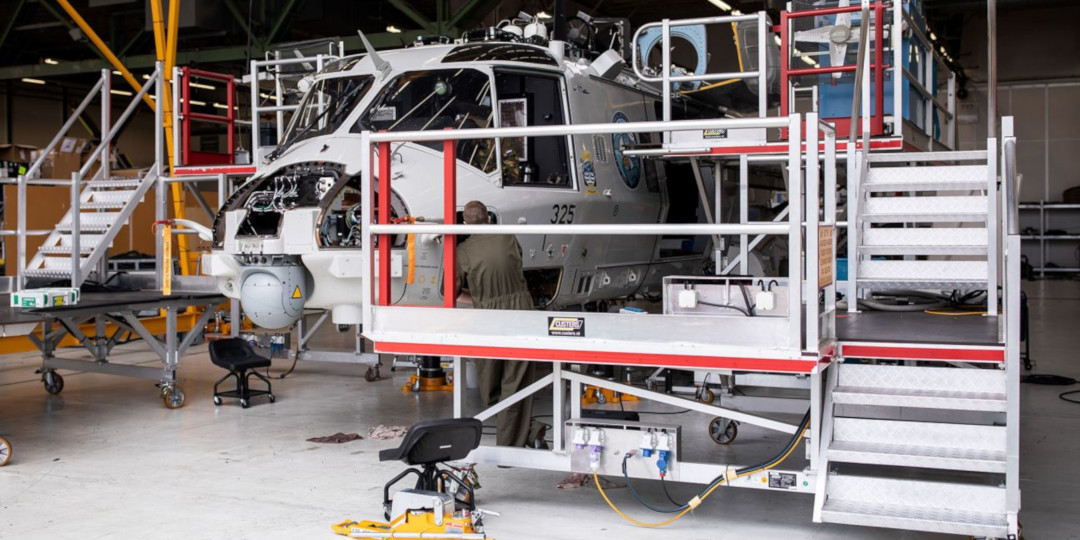
We have very unique items in the Air Force, that's why we make tools ourselves.
A workshop at the academy
Bas Janssen, member of the Ambition Innovation Results (AIR) division, focuses on gaining and sharing knowledge on manufacturing techniques like laser cutting and 3D printing, as well as other technologies. He does this by running a makerspace within the Royal Netherlands Air Force: the MakAIRsJop.
His workshop helps maintenance students and engineers find innovative solutions for challenges in their work. Initially, Bas started hosting workshops using multiple Ultimaker 3 printers. After quickly becoming familiar with the hardware and software, Bas and his colleagues began to see new opportunities to improve maintenance speed and efficiency at the air base.
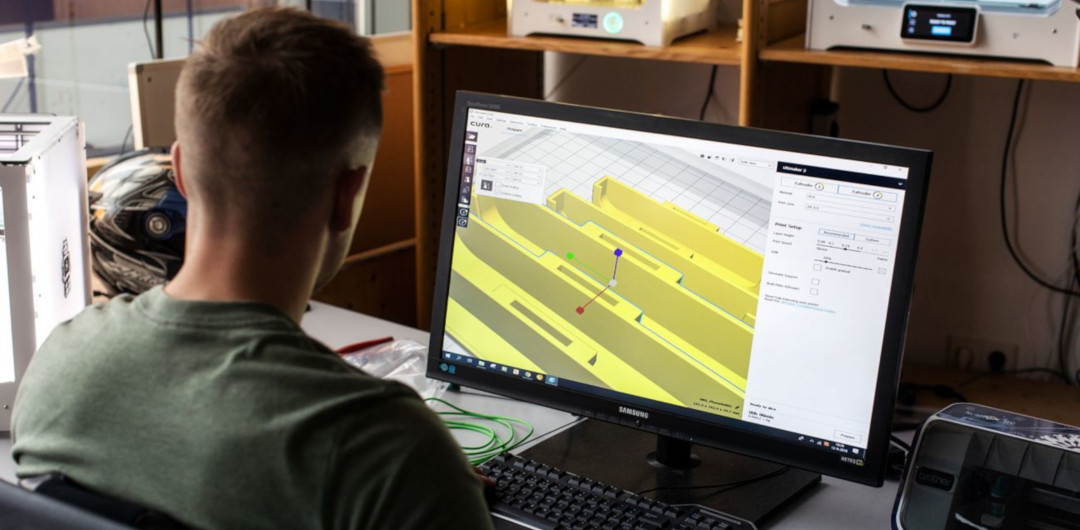
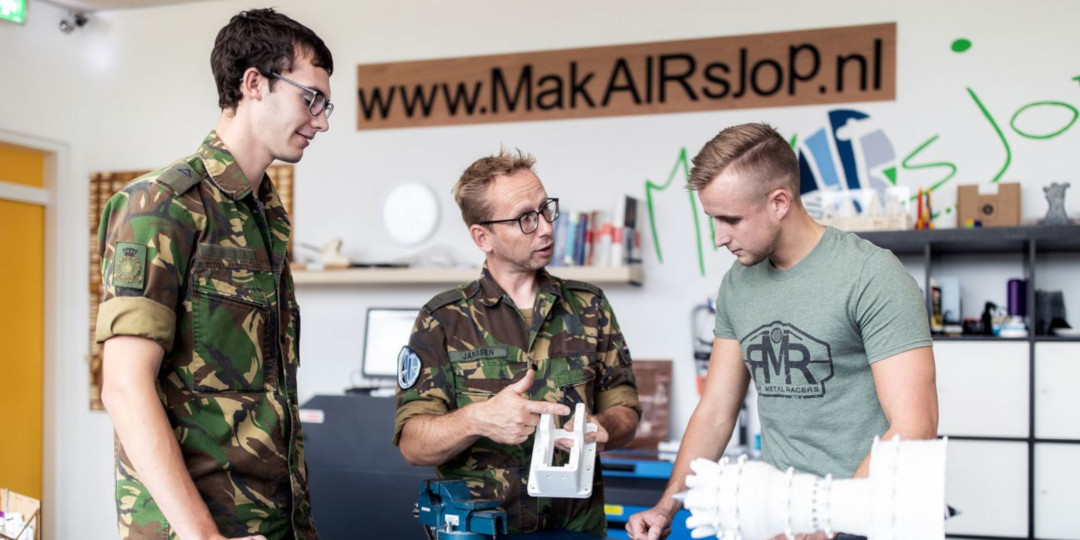
The people who work with 3D printing often have no technical background, but only need about three hours of training. After that, they start looking for solutions for issues they have in their work.
Spare parts, tools, and fixtures
Performing maintenance on such complex and customized aircraft can be a huge challenge: there are a lot of uncommon parts and systems to work with. 3D printing makes the work simpler. It offers a way to affordably create tools that fit these specific applications in hours. This is something Bas and his team soon realized. Instead of outsourcing, they’ve printed numerous parts in the past two years, saving time and money.
For example, when jet engines are transported, certain openings need to be covered with a special cap. These parts are expensive to purchase and slow to be delivered. However, using the Ultimaker it only takes about two hours to print the part.
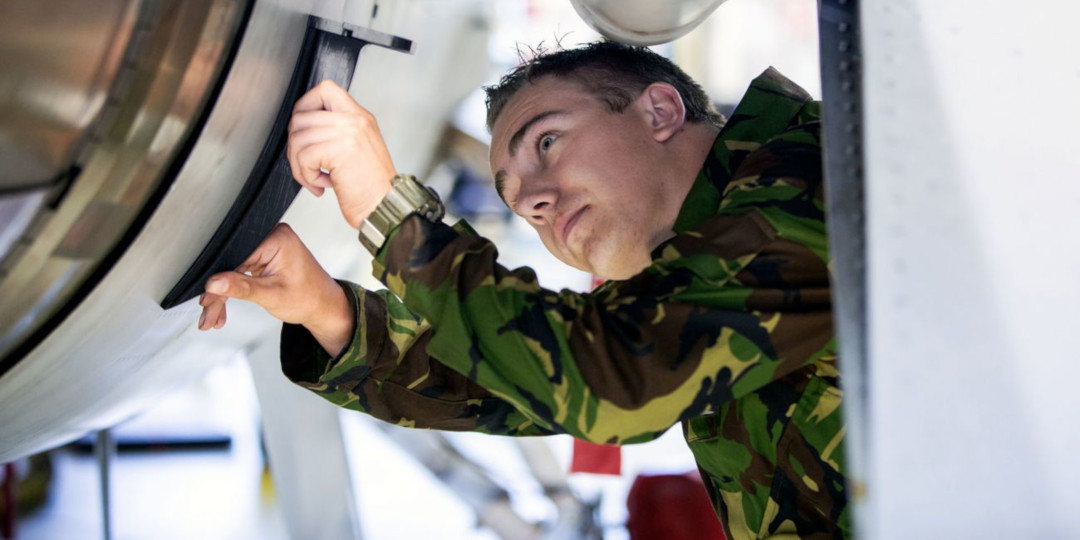
We use the Ultimaker to print tools, fixtures, and prototypes with the highest standards.
The Ultimaker 3D printers are also used to create special tools to adjust equipment. For example, certain helicopter parts are difficult to configure when they’re installed. By using a simple 3D printed part, these adjustments can be made before mounting it into the helicopter, saving the team multiple hours per aircraft.
Some metal parts also have to be CNC machined. For this application, the Ultimaker printers are used for prototyping and fit-testing. This way, they can easily and cost-effectively iterate on designs before making the actual part.
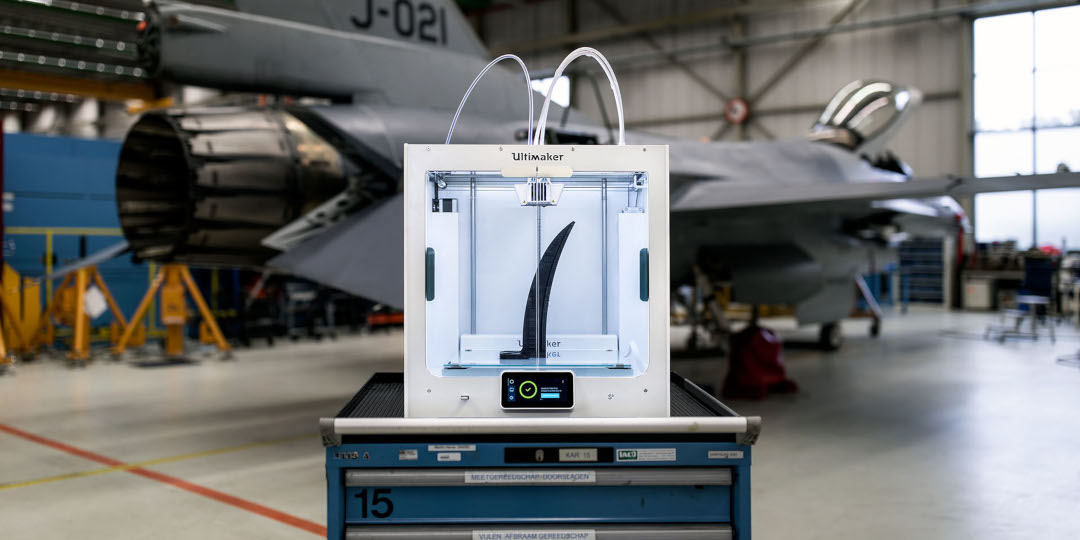
3D printing is taking off
After the workshop's initial successes, the Royal Netherlands Air Force have started to expand their 3D printing activities. They’ve recently added the Ultimaker S5 to their line of printers, to print bigger parts and start working with new, more advanced materials.
Bas now recommends that every Air Force maintenance location should take advantage of 3D printing. “Our transition to a fifth-generation Air Force can only be done with people who realize that they can be a part of that change now, not later. Ultimaker makes it possible to do just that: help people understand what additive manufacturing can do for them right now – without a long learning curve. The current software and hardware help people to make their idea come to life”.
His team will be able to share 3D models, create new designs, and support local personnel with printing. In this way, military maintenance engineers can manufacture the right tools, directly and locally.
Thinking of adding a 3D printer to your tool set? Click below to learn more about our most capable machine.



